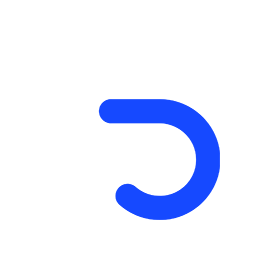The internet has grown from a small community of computer scientists, hobbyists, and tech-savvy users to a worldwide network of interconnected computers. In the last two decades, we have seen rapid growth in the digital world, driven by things like artificial intelligence and new types of online user experiences.
We believe that the current version of the internet is approaching its final form, and soon we will see a new era of web services—one that is faster, safer, and more secure than anything we’ve experienced so far.
This blog post introduces you to Web 3.0 and explains what it means for the future of the Internet as we know it. What are some examples of Web 3.0? Keep reading to find out!
What is Web 3.0?
Web 3.0 is the next version of the internet that will be faster, more secure, and more accessible than any online experience today. The internet we are currently using right now is Web 2.0 and 3.0 is still working in progress.
The core value of Web 3.0 is decentralized and focus to connect individual people around the world without any restriction.
How will Web 3.0 be different from current versions of the Internet?
Web 3.0 will be a complete overhaul of the current internet. The current version of the internet is centralized, with a few large companies controlling the worldwide flow of data and billions of users relying on these services.
The future version of the internet will be decentralized and distributed across millions of computers and servers that are owned by individuals. This decentralized network of computers will make the internet more secure, and faster, and will allow for a greater flow of data across the world.
Why is Web 3.0 important?
A more centralized internet is prone to hacks and cyberattacks. Some of the most prominent attacks of the last decade, such as the WannaCry and NotPetya attacks, have been able to shut down large portions of the internet.
A decentralized internet, on the other hand, will be much more difficult to hack and will provide a more secure way of doing business over the internet. And the current internet is slow and outdated.
Many people around the world who rely on the internet for their daily lives experience slow load times that hinder productivity and make it difficult to complete daily tasks.
A decentralized internet will be faster and will allow people to complete everyday tasks at the speed of light.
The role of Ethereum in Web 3.0
Ethereum is a decentralized computer network that is used to run apps and store data in a decentralized manner. This computer network was designed to be used by individuals and small businesses, and it can be used to do everything from storing personal data to running small businesses.

Ethereum is what runs applications on Web 3.0. It is used by millions of people and companies to run decentralized apps and store data in ways that are extremely difficult to hack. Ethereum is a powerful and robust system that is used by some of the largest businesses in the world to do everything from controlling financial assets to managing supply chains.
Final words: A world with Web 3.0
The rise of Web 3.0 will revolutionize how we live, work, and play. It will allow people to communicate and transfer data faster than ever before and will give businesses new ways of storing data and conducting everyday operations.
The future of the internet is exciting, and Web 3.0 will bring a new world of possibilities and opportunities to people from all walks of life.
Conclusion
In this article, you may be confused about some technical words such as Ethereum, decentralized computer network, etc. if you are away from technical terms. But shortly, Web 3.0 is a decentralized network, focusing on individual (P2P), global internet performance and security.



























